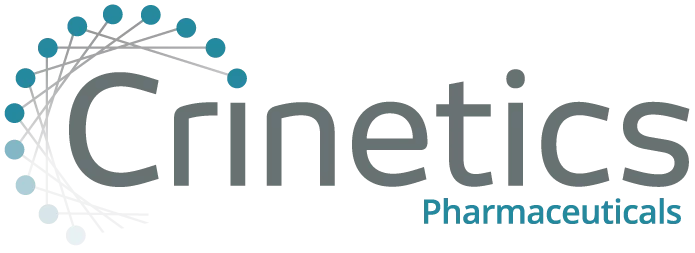What is carcinoid syndrome?
Carcinoid syndrome is a group of symptoms some patients may present when they have a specific type of cancer called a neuroendocrine tumor, or NET. NETs are a rare, slow-growing type of cancer – they only represent about 1% of all cancers – and can occur in any number of places in the body, most often in the digestive tract.
Not all neuroendocrine tumors cause carcinoid syndrome, but it commonly develops if the NET spreads from the small bowel (or other locations) to the liver. In these cases, the hormones the NET secretes cannot be filtered out by the liver as they normally would, so they get into the body’s circulatory system and cause the symptoms of carcinoid syndrome.1
Pathophysiology
Seventy percent of NETs are found in the digestive tract and 25% originate in the lungs. Other possible locations include the pancreas, adrenal glands, ovaries, testes, and kidneys.
NETs derive from enterochromaffin cells (ECCs), which are found in the digestive tract, primarily in the small intestine, colon, and appendix.2 ECCs play a large role in gastrointestinal regulation, intestinal motility, and secretion.3 The substances they secrete are called humoral factors (meaning they are transported by the circulatory system), and include about 40 different polypeptides, biogenic amines, and prostaglandines. The most common of these are serotonin, histamine, tachykinins, kallikrein, and PG (prostaglandin).4
As most NETs originate in the gastrointestinal (GI) tract, substances produced by these tumors have to pass through the liver to reach the systemic circulation. In the liver, most of these substances are broken down and inactivated. For this reason, NETs originating in the GI tract do not present with carcinoid syndrome. When it does occur, the substances causing the carcinoid syndrome are produced not by the original tumor but by metastasis, that bypass the liver filtration.
About Carcinoid Syndrome
Flushing
This is the clinical hallmark of carcinoid syndrome and occurs in 85% of NETs patients5 who experience symptoms of carcinoid syndrome. Flushing is a sudden, intense reddening of the skin with a warming and/or burning sensation of the face, head, and upper chest. These episodes occur spontaneously and can last anywhere from 30 seconds to 30 minutes, but they can also be provoked by eating, drinking alcohol, coffee, spices, or experiencing an emotional event. Severe flushes are accompanied by a fall in blood pressure and a rise in pulse rate. Many people experience excessive tearing. As the disease progresses, these episodes may last longer and become more diffuse.
Diarrhea
Often the most debilitating component of the syndrome, diarrhea occurs in 80% of NETs patients who experience symptoms of carcinoid syndrome. Instances may vary from a few to more than 30 per day, with typically watery and non-bloody stool. This can be accompanied by abdominal cramping and presents a risk of dehydration.
Bronchospasm
Wheezing and dyspnea occur in 10-20% of patients, often during flushing episodes.
Venous telangiectasia
This is sometimes called “spider veins” and is similar to acne rosacea. Purplish in color, they’re caused by prolonged dilation of the veins, most often on the nose, upper lip, and malar areas (cheekbones).
Cardiac valvular lesions
These are plaque-like deposits of fibrous tissue, most commonly found on valvular cusps or in cardiac chambers.
Other signs and symptoms
Muscle wasting, retroperitoneal fibrosis leading to ureteral obstruction, and persistent facial edema.
Why carcinoid syndrome can be difficult to diagnose
In the early stages of carcinoid syndrome, the symptoms are relatively nonspecific. The differential diagnoses for diarrhea, vague abdominal symptoms, and even flushing are rather broad. Patients are often given an initial diagnosis of irritable bowel syndrome, and only later does the true diagnosis become apparent.
Contributing to the difficulty in diagnosis is the fact that neuroendocrine tumors grow quite slowly, over a period of several years. So getting to the point in the process when the symptoms of carcinoid syndrome begin to manifest takes a long time. By the time they do, the disease process has been advancing for quite a while. The median time from onset of symptoms attributable to the tumor and diagnosis is 9.2 years.5,12
Timely diagnosis of carcinoid syndrome is often difficult. Frequent diarrhea usually sends patients to a gastroenterologist. When a patient wheezes and gasps for air, they will go to a pulmonologist. Someone may see a variety of specialists over the course of several years before finally getting a proper diagnosis.
As with any rare disease, awareness is the starting point in reaching the correct diagnosis soon. The occurrence of episodic facial flushing and/or chronic diarrhea not diagnosed by standard tests as being a result of more common causes should lead to suspicion of carcinoid syndrome. Definitive diagnosis, however, is best achieved with a multimodality approach, which may include any of the following.
Biochemical testing
Measurement of 24-hour urinary excretion of 5-hydroxyindoleacetic acid (5-HIAA), a metabolite of serotonin, is a useful initial diagnostic test but can present logistical challenges for patients. In addition, accurate measurement requires a mixture of water and acid be used in the collection receptacle to preserve the 5-HIAA. The patient must eliminate certain foods from their diet three days before sample collection begins. This test has a sensitivity of over 90% and a specificity of 90% for carcinoid syndrome.6 Sensitivity is low in patients with NETs without carcinoid syndrome.7 The 5-HIAA level can now be assayed with blood tests that simply require an overnight fast before the blood draw.
Radiological or nuclear imaging
Imaging studies should focus on the abdomen and pelvis since the liver is the most common distant metastatic site. Computed tomography (CT), MRI, ultrasound, endoscopy, or other diagnostic imaging using radiolabeled somatostatin analogs are the primary modalities used to identify NETs.
Tissue biopsy
If the NET is localized and can be accessed surgically, a biopsy is taken for study by a pathologist.
Sometimes the diagnosis is established incidentally at the time of surgery for another suspected condition, such as intestinal obstruction or appendicitis.
Many of the major symptoms of carcinoid syndrome tend to be on the dramatic side. Spontaneous-onset of flushing episodes, during which some patients report “feeling on fire.” Frequent diarrhea that can hit anytime, anywhere. Difficulty breathing, which as any asthma sufferer can attest, induces a panicked feeling.
These daily challenges often cause a great deal of stress for patients. Not knowing where, why, or when the next episode will hit can severely inhibit social interaction, which can lead to a sense of isolation. In undiagnosed patients, these episodes can cause alarm for one’s health, and can lead to frustration if not recognized for what they are.
Because it is so rare, carcinoid syndrome is often not detected or even suspected when someone presents with symptoms. Keeping it in mind as a possibility will go a long way to getting patients the treatment they need, sooner. Access to treatment is also critical, and marked by successive steps which are followed according to the efficacy of each option.
Surgery
Removing the entire tumor when possible is most desirable, while debulking (reducing) any metastasis. The degree of success depends on tumor size and location.
Somatostatin analog therapy
Somatostatin is a peptide that inhibits the secretion of a broad range of hormones in the body by binding to receptors on the surface of certain cells. Because nearly 80% of well-differentiated gastrointestinal NETs express somatostatin receptors, a class of drugs called somatostatin analogs are one of the first avenues for treatment of carcinoid syndrome.
Two of these somatostatin analogs, octreotide and lanreotide, bind to receptor types 2, 3, and 5. They are effective at inhibiting the release of serotonin and other humoral factors; therefore, they are mainstays of treatment. Flushing and diarrhea improve significantly in over 80% of patients undergoing this therapy.11 These drugs will also control the growth of the tumor itself. Octreotide LAR (long-acting release) and lanreotide Autogel achieved symptomatic improvement in 74% and 68% of patients, biochemical response in 51% and 39%, and tumor response in 70% and 64%, respectively.13
Octreotide has a short-acting formulation used for symptom control when the long-acting option given via monthly injections is not enough to control the symptoms. The drugs are usually well-tolerated, though the injections themselves can be quite painful and disruptive to patients’ lives.
Radiation therapy
In cases where patients don’t respond to octreotide therapy, peptide receptor radioligand therapy (PRRT) may be performed. This is done by radio-labeling a somatostatin analog with 177-Lutetium (Lu), which delivers targeted radiation to somatostatin receptor-expressing tumors. Patients with carcinoid syndrome have demonstrated high symptomatic response rates with this therapy.
Embolization
Hepatic artery chemo-embolization or radio-embolization may be performed in some patients to, basically, starve the cancer cells of their blood supply.
Other medical therapies
Another medication, telotristat, stops the metabolism of tryptophan into serotonin and can help reduce diarrhea. It is prescribed in addition to somatostatin analog therapy.
Interferon can exert antitumor effects as well, though it is associated with sometimes debilitating toxicities, which can include fatigue, depression, and flu-like symptoms.
Depending on the patient’s response, a combination of therapies may be used. A number of different side effects are possible. Please refer to product labeling for a complete list of side effects associated with any of these therapies.5
Crinetics is developing paltusotine for the treatment of NETs and carcinoid syndrome. Paltusotine establishes a new class of oral, selective, nonpeptide, somatostatin receptor type 2 (SST2) agonists. This once-daily oral investigational treatment is the first agent in its class with reported clinical trial results for the treatment of acromegaly. In clinical studies of patients with acromegaly, paltusotine was well-tolerated with no severe serious adverse events or new safety signals.
The paltusotine timeline
March 2018
Initial results reported from a Phase 1, double-blind, randomized, placebo-controlled, single- and multiple-ascending dose trial to evaluate the safety, pharmacokinetics, and pharmacodynamics of paltusotine in 99 healthy volunteers.
Paltusotine demonstrated proof-of-concept (POC) by potently suppressing stimulated GH and baseline IGF-1 in these subjects. Plasma exposure of paltusotine indicated the drug was well-absorbed with a half-life of 42 to 50 hours, supporting once-daily administration in patients. The safety and tolerability of paltusotine observed in this trial was generally consistent with that of approved peptide somatostatin analogs. Read the poster here.
August 2018
Submitted an Investigational New Drug (IND) application for paltusotine for the treatment of acromegaly to the U.S. Food and Drug Administration (FDA).
Late 2018
Initiated two global Phase 2 clinical trials of paltusotine in acromegaly patients: ACROBAT EVOLVE and ACROBAT EDGE. Both completed their recruitment phase and were conducted at investigational centers in the U.S. and globally. Patients who completed either study were eligible to participate in an open-label extension study (ACROBAT ADVANCE).
October 2020
Phase 2 EDGE study met primary endpoint. Read the presentation here.
1H 2021
We will begin a Phase 3 program in acromegaly.
2H 2021
Initiation of Phase 2 trial in carcinoid syndrome.
Stay in the loop
Crinetics is committed to redefining what’s possible in the fields of endocrinology and oncology. Patients are critical to our continued research in developing effective treatments for carcinoid syndrome and other rare endocrine diseases. If you or any of your patients are interested in our work and would like to stay informed by subscribing to our newsletter, please visit Crinetics.com.
Crinetics is intently focused on empowering patients with carcinoid syndrome who are eager to be heard and who are seeking better treatment options, as well as all healthcare practitioners, to recognize the symptoms of carcinoid syndrome, diagnosis this rare disease, and implement the best course of treatment to control it.
We encourage you to establish connection with the following organizations to continue raising your awareness so that these vastly underserved patients can realize brighter futures. And, by all means, tell them Crinetics sent you.
The Final Word
Carcinoid syndrome is complex, rare disease that warrants greater awareness, and Crinetics is dedicated to making that happen. Your reading this web page is the first step in reaching our goal. If you’ve come this far, we appreciate you and we have a few final asks:
Keep carcinoid syndrome in your mental Rolodex of possible diagnoses. If you’re a patient, tell your doctor everything you’re experiencing.
Listen to patients who present with the telltale symptoms. Patients should be forthright with all of their healthcare providers.
Be the one who diagnoses it because you knew.
Prescribe your patients the treatments that can help them feel better.
Spread the word about this disease’s signs and symptoms.
Connect with medical associations and patient groups to keep on top of the latest treatments. If you suffer from carcinoid syndrome, you can tap into a support network with helpful resources.
Let’s work together to ensure underserved patients benefit from Better therapies for Better lives.




